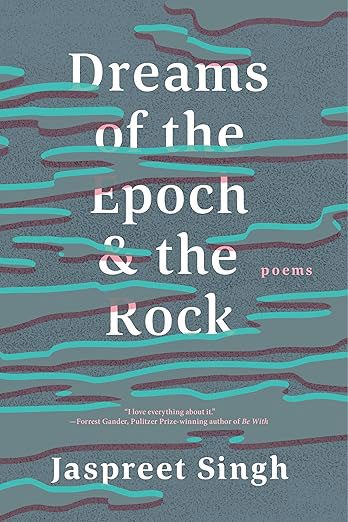There are more keen readers of fiction than poetry, and Calgary writer Jaspreet Singh is, perhaps inevitably, better known for his three novels than for his verse. But he is an accomplished poet with a considerable range in both subject matter and form. Dreams of the Epoch & The Rock, his third book of poetry, layers together science, memory, wonder and language to examine the epoch of change we are all living through. One word for that epoch is the “Anthropocene”—the geological epoch following the Holocene, marked by human impact on the earth’s systems. While the existence of a new geological epoch is debated, the idea of the Anthropocene is both popular and fruitful for practitioners of ecopoetry—poetry about climate change and other ecological issues.
Singh, a former research scientist, approaches the idea of the Anthropocene from both a personal, observational angle, and through following the work of the Anthropocene Working Group of the International Commission on Stratigraphy. That’s the branch of geology dealing with rock layers and layering, and it’s an ideal jumping-off point for these poems. “Waiting for Rain,” for example, proceeds in mixed stanzas, layers really, of two and three lines, each adding new material—from flamingos to insects to plants to seeds and finally to the poet’s questions about the language that seeds might use. The poem’s sounds double down on the layering effects, beginning with flowing lines that end on an unstressed syllable—“I love those incomprehensible flamingoes”—and veering into lines marked by heavy, rock-like endings and alliteration: “that bide for decades in drylands/ as dormant seeds.”
Alliteration and assonance are two of the few formal devices Singh allows himself in these poems, and he often uses them to great effect. The other techniques he’s fond of are more in line with the free-verse or prose poem structures he favours—white space between words, a purposeful lack of punctuation, mixing words and lines from other languages (Punjabi and Spanish) into the English, and even the occasional visual poem.
To my mind, though, the most effective free verse strategy of Singh’s is what you might call burying a sentence—distributing it over multiple lines so both the sentences and lines become abutting layers—making meaning by knocking into each other, as in “What Will You Do Earth”: “Who will make maps? And figure the whole/ project as plainwrong? Who will compose/ symphonies?” The questions are addressed to the planet as it anticipates the disappearance of humanity. It cannot answer, of course, and it cannot mourn, but Singh makes mourning, and beauty, out of asking the questions just the right way.
Alex Rettie is a long-time reviewer for Alberta Views.
_______________________________________


